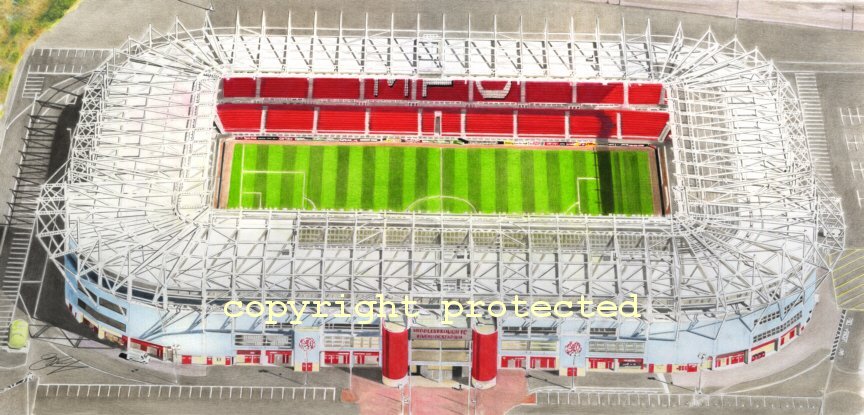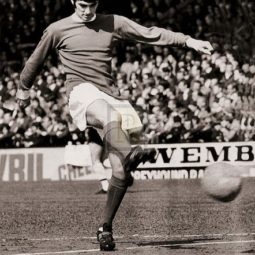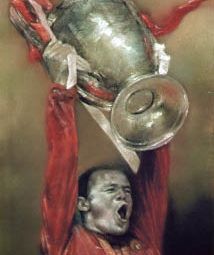Description
Click on Image to view a larger version
After formation in 1876, and with the club still amateurs, Middlesbrough’s first two years of football were played at Albert Park in Middlesbrough. After seeing the damage being caused by players and supporters, the Park Committee ordered the club to find an alternate venue. The club moved to Breckon Hill, behind the present-day Middlesbrough College, after agreeing to rent the land from its owner. However, two years later in 1880, the owner increased the rent and the club decided to move. They moved into the Linthorpe Road Ground in 1882, home at the time of Middlesbrough Cricket Club. The cricket club departed in 1893-94 to move to the Breckon Hill field, and Middlesbrough Football Club became sole users of the ground
With the club’s growing size, and entry to the Football League, they had to move to a new ground in 1903, Ayresome Park It was designed by Archibald Leitch and would be the club’s home for the next 92 years. Following the Taylor Report in 1990, the ground either needed modernising or the club needed a new stadium. The club decided on the latter, and moved out at the end of the 1994-95 season. It was used as a training ground during 1995-96, before it was demolished in 1997 and a housing estate built in its place. The club now trains at a £7 million complex at Rockliffe Park, in Hurworth, on the outskirts of Darlington
The Riverside Stadium, named by the supporters of the club after a vote, became the club’s home in 1995. It was the first stadium to be built in line with the Taylor Report’s recommendations on all-seater stadia for clubs in the top two divisions of the English football league system. It was originally a 30,000 seater stadium, constructed for a modest fee of £16 million before it was expanded in 1998 to its 35,100 capacity for an extra £5 million. Average attendances at Middlesbrough matches have fluctuated over the past several years, moving from a 2004-05 high average of 32,012 to a low of 26,092 in 2006-07, then up again to 28,428 in 2008-09. Following relegation to the Championship attendances have dipped, although the crowd of 23,451 which saw Middlesbrough’s first Championship game against Sheffield United represents far higher gates than is usual for the division, and indeed larger than those of many Premier League clubs such as Wigan Athletic, and Bolton Wanderers. Steve Gibson was quoted saying that in the next 5 years he would like to extend the Riverside’s attendance to 40,000.









